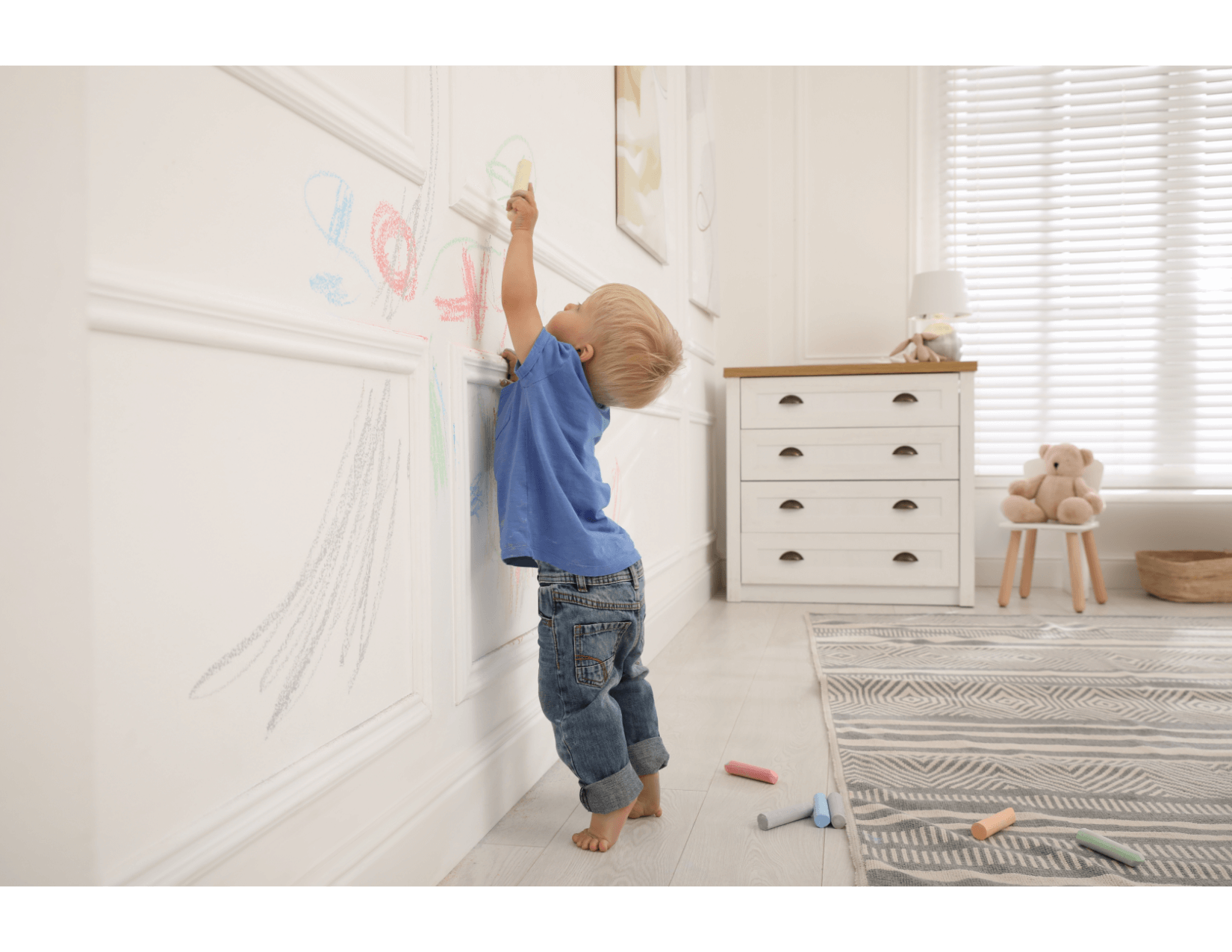It’s easy to become accustomed to saying no to your kid. But does it actually teach them right from wrong effectively? Experts don’t think so. Conquer your reactive “no” habit with better alternatives from a licensed family therapist and social worker. Here’s everything you need to know about parenting with increased emotional intelligence.
What Happens When You Overuse The Word No
A child’s executive functioning skills–aka self-control and ability to follow multiple-step directions–don’t noticeably grow until ages 3 to 5, with a continued improvement throughout adolescence and early adulthood. For example, when you tell a child “no climbing,” they need the executive functioning skills to think about what they should do instead. “This takes a lot of brain power, and the younger the child, the less resources they will have,” says Bryana Kappadakunnel, LMFT, a licensed marriage and family therapist and owner of Conscious Mommy. In fact, it’s common for children to burn out on the word “no”–creating a less significant association with the term. This is why it’s often more effective and helpful to tell your child what they should do instead.
Yet, when you examine a child’s brain from a neuroscience perspective, something else is going on. “NO signals danger in our nervous systems and can create tension or anxiety,” says Amy Armstrong, LISW, PCI, a licensed independent social worker, certified parent coach, and co-owner of The Center for Family Resolution. So, in some cases, a seemingly harmless and quick “no” might trigger a stress response in your child.
When Is It Okay To Say No?
However, there is definitely still a time and place to say no. “Save a hard “no” for health and safety issues–and the no will retain its impact,” says Armstrong. This means reserving it for situations that involve danger or physical safety to your child to grab their undivided attention. “If they’re reaching for something hot that could burn them or something sharp that could cut them, your “no” needs to startle them enough to get them to pause and look to you for direction,” says Kappadakunnel.
When it’s okay to say no to your child:
- Running into the street
- Reaching for knife
- Touching something hot
- Aggressively hitting
5 Alternatives To Saying No
It’s never too late to change how you react to your children. But it will take some practice to get it right. If “no” is automatically engraved into your brain as a response, you’re not alone. And to swap your “no’s” out for something more effective and mindful, you need to know what to say instead. Licensed marriage and family therapist Kappadakunnel and licensed social worker Armstrong give a few examples on how to tell your kids no without actually saying it.
Situation #1: Throwing Food
So your child just threw the dinner you made them on the floor–totally on purpose. It can be a bit upsetting. But instead of instinctively blurting out “no,” try this instead. “Looks like you’re done eating,” suggests Armstrong. And don’t forget to follow up with this next important step. Actually, have your child get out of their chair and help pick up the food off the floor. “If they’re throwing food because they’re all done, have them pick up the food, put them back in their seat, then model saying all done for them–consistency is key,” says Kappadakunnel.
Situation #2: Drawing on the Wall
As a parent, you probably already know what a kid and a rogue crayon can do. The key here is to take a breath and stay neutral. Kappadakunnel suggests swapping “no” for “We draw only on paper with our crayons,” followed by “It’s time to clean it up. Let’s go get a washcloth.” After the squiggles are all cleaned up, Armstrong recommends grabbing a sheet of paper for your child and saying, “Here is your perfect place for drawing.” And remember, washable crayons and markers are your best friend.
Situation #3: Hitting their Sibling
Hitting is a more significant situation than throwing food and drawing on the walls. Taking the right steps and using effective words will go a long way in stopping this behavior from happening in the future. If your child starts hitting their sibling, Kappadakunnel suggests saying, “Stop your body. I cannot let you hit–hitting is not safe.” Then, check in with the sibling who was hit, asking if they are okay. Once everyone has calmed down, have both kids sit together. “Help them share what each side of the problem was, and help them practice a more agreeable solution,” says Kappadakunnel.
Situation #4: Ripping Pages out of a Book
Ripping up books is common among young children. But it’s important to address it quickly and correctly before you end up with destroyed books in the house. “I like to read all the pages, let’s only rip scrap paper” is a great “no” alternative that Armstrong recommends. Also, take it a step further and have your child find some old newspapers they can rip up. Or, Kappadakunnel even recommends inviting your child to reconstruct the ripped book pages with tape.
Situation #5: Climbing on Furniture
It’s important to note that climbing is critical to each child’s development. So before you discourage it entirely, it’s best to leave some areas as “climb safe” zones. “I’d recommend having a hard boundary around climbing on tables, sinks, etc., and redirecting the child to a more appropriate place to climb while leaving open some reasonable climbing on couches,” says Kappadakunnel. This is especially true if you don’t have any other kid-friendly climb structures in the house. But there definitely is a time when climbing on the furniture can get dangerous. If you notice your child climbing and it’s becoming unsafe, try the following. “You love to climb high and jump! Let’s climb on the jungle gym this afternoon at the park,” says Armstrong.
Alternatives to “No” Cheat Sheet
| Instead of this: | Say this: |
| “No throwing food!” | “Looks like you’re done eating–let’s pick up this mess.” |
| “No, don’t draw on the wall!” | “We only draw on paper with our crayons–let’s clean this up and get some paper for you to draw on.” |
| “No, no, no, don’t hit!” | “Stop your body. I cannot let you hit–hitting is not safe.” |
| “No! Don’t rip the book!” | “I like to read all the pages–let’s only rip scrap paper.” |
| “No, get down now!” | “You love to climb high and jump! Let’s climb on the jungle gym this afternoon at the park.” |
Experts in this article:
Amy Armstrong, LISW, PCI, is a licensed independent social worker and certified parent coach. She received her Master’s degree in Social Work from Ohio State University and has helped thousands of parents shift away from blame and defensiveness to effective problem-solving. Armstrong is also the co-founder of The Center for Family Resolution, a place dedicated to resolving even the most heated family challenges.
Bryana Kappadakunnel, LMFT, is a licensed marriage and family therapist and an infant-family early childhood mental health specialist. She received her Master’s degree in clinical psychology from Pepperdine University and has over 15,000 hours of direct child-parent treatment experience. Kappadakunnel is also the CEO of Conscious Mommy, a place to equip parents to respond more effectively in their homes and connect them to a community.




